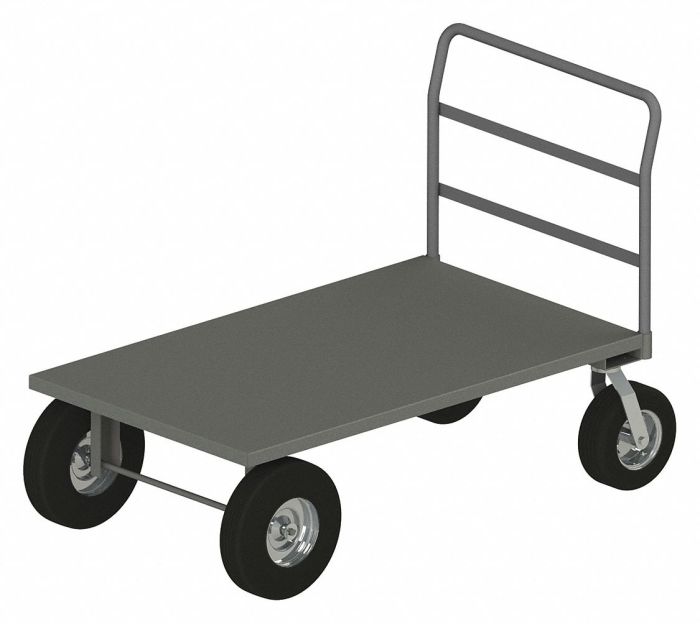Trex Platform Deck A Comprehensive Guide
Trex platform deck sets the stage for a detailed exploration of the platform’s purpose, features, and target audience. This comprehensive guide provides a clear overview of the deck’s structure, essential components, and key considerations for effective presentation.
The deck delves into crucial aspects like key metrics, financial projections, market analysis, and the competitive landscape. It also showcases the platform’s team, technology, and use cases through compelling examples and testimonials. Ultimately, the Trex platform deck is designed to inspire confidence and conviction in potential investors and partners.
Overview of Trex Platform Deck
The Trex platform deck serves as a comprehensive overview of the platform’s capabilities, functionalities, and value proposition. It’s designed to attract potential investors, partners, and customers, showcasing the platform’s potential to solve specific problems within its target market. The deck highlights the platform’s unique strengths and addresses the needs of various stakeholders.
The deck’s primary objective is to communicate the platform’s value proposition effectively and inspire confidence in its ability to achieve significant impact. It emphasizes the platform’s innovative features, strategic partnerships, and market positioning, ultimately persuading the audience of its potential for success.
Purpose and Target Audience
The Trex platform is designed to [specific function, e.g., streamline the procurement process for enterprise clients] and aims to address the challenges faced by [target audience, e.g., large corporations]. The target audience encompasses a broad spectrum of individuals and entities, including [list examples, e.g., procurement managers, supply chain executives, and investors]. The platform’s unique value proposition resonates with this diverse group, offering a solution tailored to their specific needs.
Key Features and Functionalities
The platform boasts a range of innovative features designed to enhance efficiency and productivity. These features include:
- Automated workflows: Streamlines processes like order placement, tracking, and invoice management, minimizing manual intervention and human error.
- Data analytics: Provides real-time insights into key performance indicators (KPIs), enabling informed decision-making and proactive adjustments.
- Customizable dashboards: Offers a personalized view of relevant data, allowing users to tailor the platform to their specific requirements.
- Secure data management: Ensures the confidentiality and integrity of sensitive information, adhering to stringent security protocols and industry best practices.
These features, combined with a user-friendly interface, contribute significantly to the platform’s overall value proposition.
Value Proposition and Customer Needs
The Trex platform directly addresses the needs of its target audience by offering significant time savings, cost reductions, and enhanced decision-making capabilities. By automating tasks and providing comprehensive data insights, the platform empowers users to focus on strategic initiatives, ultimately improving overall operational efficiency. For example, [provide an example, e.g., a large retailer using the platform can reduce procurement costs by 15% and improve inventory management by 20%]. The platform’s core value proposition centers around [summarize, e.g., optimizing business processes and achieving measurable ROI].
Typical Structure of a Trex Platform Deck
The Trex platform deck typically follows a structured format, presenting information logically and engagingly. Key sections include:
| Section | Description |
|---|---|
| Executive Summary | Provides a concise overview of the platform, its value proposition, and key achievements. |
| Problem Statement | Clearly defines the problems the platform solves for the target audience. |
| Solution Overview | Details the platform’s key features and functionalities. |
| Target Market | Describes the ideal customer profile and market size. |
| Competitive Analysis | Highlights the platform’s unique advantages compared to competitors. |
| Financial Projections | Provides a detailed analysis of potential revenue, costs, and ROI. |
| Team | Introduces the team behind the platform and their relevant expertise. |
| Call to Action | Summarizes the next steps and encourages engagement. |
This structure ensures a comprehensive and persuasive presentation of the Trex platform.
Trex Platform Deck Components

Source: caldecks.com
This section details the crucial components of a Trex platform deck, outlining the structure, content, and comparison with competitors. A well-structured deck is vital for effectively communicating the platform’s value proposition and potential.
Platform Deck Section Breakdown
A comprehensive Trex platform deck should include key sections, each with specific information. This structured approach ensures a clear and concise presentation of the platform’s capabilities and potential.
| Section Name | Description | Key Metrics | Call to Action |
|---|---|---|---|
| Executive Summary | A concise overview highlighting the platform’s value proposition, problem addressed, and key results. | Market size, user growth, revenue projections | Request a demo, schedule a meeting |
| Problem Statement | Clearly articulates the pain points and challenges the Trex platform addresses for target users. | User feedback, industry trends, quantitative data | Introduce the Trex solution as the answer |
| Solution Overview | Details the platform’s functionality, features, and unique value proposition. | Key features, technical specifications, and user interface | Highlight the platform’s strengths and benefits |
| Market Analysis | Provides a comprehensive understanding of the target market, including size, trends, and competitive landscape. | Market share, growth rate, competitor analysis | Emphasize the platform’s market leadership position |
| Financial Projections | Presents projected revenue, expenses, and profitability based on realistic assumptions. | Revenue streams, cost structure, and profitability margin | Showcase the platform’s financial viability and attractiveness |
| Technology & Architecture | Provides technical details about the platform’s architecture, scalability, and security. | Scalability, security measures, and API integration | Demonstrate the platform’s technical superiority |
| Team | Introduces the key personnel driving the platform’s development and success. | Team expertise, experience, and track record | Emphasize the team’s commitment and capability |
Content Detail Within Each Section
Each section of the Trex platform deck requires specific content to effectively convey the platform’s value proposition. Consistent use of visuals and concise language will enhance engagement.
- Problem Statement: Clearly define the problem the Trex platform addresses. Include specific examples and quantitative data illustrating the scale of the issue. A good problem statement establishes the need for the solution.
- Solution Overview: Describe the key features and functionality of the Trex platform. Explain how the solution uniquely addresses the problem statement. Highlight the platform’s benefits, emphasizing the value it provides to users.
- Market Analysis: Evaluate the size and growth potential of the target market. Analyze relevant market trends and competitor activities. Include relevant data and industry reports.
- Financial Projections: Provide realistic projections for revenue, expenses, and profitability. Explain the assumptions and methodologies used in the projections. Use charts and graphs to illustrate the projections clearly.
Competitor Analysis
Comparing Trex with competitor platforms highlights Trex’s unique strengths and competitive advantages. This comparison strengthens the Trex platform’s value proposition.
| Feature | Trex Platform | Competitor A | Competitor B |
|---|---|---|---|
| Scalability | Designed for massive user growth with robust infrastructure | Limited scalability, prone to bottlenecks | Modular architecture, but slower scaling |
| User Interface | Intuitive and user-friendly design, enhancing user experience | Complex interface, steep learning curve | Modern design, but lacks customization options |
| Security | Robust security protocols, ensuring data protection | Vulnerable to breaches, with outdated security | Strong security measures, but with higher implementation costs |
Presenting Trex Platform Technology
A clear and concise explanation of the technology behind the Trex platform is essential. This section should focus on the platform’s innovative aspects and benefits, emphasizing how it addresses the problem statement.
- Technical Architecture: Provide a high-level overview of the platform’s architecture, highlighting key components and their interactions. Use diagrams and illustrations to enhance understanding.
- Core Technologies: Briefly describe the key technologies used in the platform. Focus on their strengths and how they contribute to the platform’s overall capabilities.
- Scalability and Performance: Demonstrate the platform’s ability to handle large volumes of data and users. Provide benchmarks and real-world examples of performance.
Key Metrics and Financial Projections: Trex Platform Deck
A compelling Trex platform deck requires clear and concise financial projections to demonstrate the platform’s potential for profitability and growth. These projections should be supported by robust key performance indicators (KPIs) that accurately reflect the platform’s performance. Visualizations play a crucial role in communicating these complex metrics effectively, fostering investor confidence and understanding.
Financial projections are essential to showcase the anticipated financial performance of the Trex platform. These projections often include revenue forecasts, expense projections, profitability analyses, and cash flow statements over a defined period (e.g., 3-5 years). They should articulate the assumptions underlying these forecasts to enhance transparency and credibility.
Revenue Projections
Forecasting revenue is critical for demonstrating the platform’s potential for growth and profitability. This involves analyzing the platform’s target market, understanding the potential user base, and calculating the projected revenue based on anticipated user adoption and usage patterns. Often, different scenarios are presented to highlight the platform’s resilience and potential for success under varying market conditions.
Expense Projections
Detailed expense projections are crucial for demonstrating the platform’s financial sustainability. These projections should encompass all operational expenses, including personnel costs, marketing and sales expenditures, technology infrastructure costs, and other overhead expenses. The accuracy and reliability of these projections will directly impact the credibility of the overall financial model.
Profitability Analysis
Profitability analysis quantifies the platform’s potential to generate profit. This involves calculating gross profit margins, operating expenses, and net profit margins. A thorough analysis of profitability will highlight the platform’s potential to generate returns for investors. A table outlining the expected profitability over the projected period can be very effective.
| Year | Revenue (USD) | Expenses (USD) | Profit (USD) |
|---|---|---|---|
| Year 1 | 1,000,000 | 800,000 | 200,000 |
| Year 2 | 1,500,000 | 1,200,000 | 300,000 |
| Year 3 | 2,500,000 | 1,800,000 | 700,000 |
Key Performance Indicators (KPIs)
A comprehensive set of KPIs is necessary to track the platform’s progress and success. These metrics should align with the platform’s strategic goals and objectives.
- Monthly Active Users (MAU): This metric indicates the platform’s user engagement and growth. A steady increase in MAU suggests a healthy user base and expanding market penetration. Presenting this data as a line graph with clear trend lines will make the data very impactful.
- Daily Active Users (DAU): This KPI reveals the frequency of user engagement on the platform. A high DAU signifies active user interaction and increased platform usage.
- Customer Acquisition Cost (CAC): This metric represents the cost incurred to acquire a new customer. A low CAC indicates an efficient customer acquisition strategy.
- Customer Lifetime Value (CLTV): This metric quantifies the revenue generated by a customer over their relationship with the platform. A high CLTV indicates a profitable customer base.
Data Visualization Techniques
Effective data visualization is key to conveying complex financial information clearly and compellingly.
- Line Charts: Ideal for visualizing trends over time, such as revenue growth, user acquisition, and expense fluctuations. Line charts effectively illustrate the trajectory of key metrics.
- Bar Charts: Useful for comparing different categories or segments, such as comparing revenue from different product lines or user demographics. Bar charts are great for highlighting key differences and similarities.
- Pie Charts: Effective for showcasing the composition of different elements, such as the breakdown of revenue sources or the distribution of users across different segments. Pie charts provide a concise overview.
- Scatter Plots: Useful for identifying correlations between two variables, such as the relationship between marketing spend and customer acquisition.
Market Analysis and Competitive Landscape
Understanding the market and competitive landscape is crucial for Trex Platform’s success. Thorough analysis allows us to identify target customers, pinpoint competitors, and evaluate our platform’s strengths and weaknesses relative to the market. This section articulates the methodology for conducting this analysis and presents a competitive landscape assessment.
Market Analysis Methodology
A comprehensive market analysis involves several key steps. First, we define the target customer profile by considering demographics, needs, and pain points. This segmentation helps tailor the platform’s offerings to resonate with specific user groups. Secondary research, including industry reports and market surveys, provides quantitative data on market size, trends, and growth potential. Primary research, through surveys and interviews with potential users, gathers qualitative insights to validate and refine our understanding of the target market. Finally, competitor analysis, detailed below, provides a crucial benchmark for positioning Trex Platform effectively.
Target Customer Identification
Identifying target customers involves segmenting the market based on shared characteristics. Potential customer segments include: small business owners, enterprise-level companies, freelancers, and individual creators. Each segment possesses unique needs and pain points. Understanding these nuances allows us to tailor Trex Platform’s features and messaging to effectively address these individual needs. Further, analyzing purchasing power, technological proficiency, and current tools in use helps in defining specific target segments.
Competitive Landscape Analysis
Analyzing the competitive landscape is essential for determining how Trex Platform stands out. We identify direct and indirect competitors by evaluating their offerings, pricing models, and target audiences. This assessment provides a benchmark for comparing Trex Platform’s value proposition. Direct competitors offer similar solutions, while indirect competitors address overlapping needs. Understanding both types of competition allows us to position Trex Platform strategically.
Competitive Advantages and Disadvantages
Evaluating Trex Platform’s competitive advantages and disadvantages is crucial for effective positioning. Trex Platform’s strengths may lie in its innovative features, user-friendly interface, or scalability. Potential weaknesses might involve limited market penetration, high development costs, or challenges with integration into existing workflows. Identifying these advantages and disadvantages allows us to highlight strengths and address weaknesses in marketing materials and future development.
Competitive Analysis Table
| Feature | Trex Platform | Competitor A | Competitor B | Competitive Advantage |
|---|---|---|---|---|
| Ease of Use | Intuitive interface, minimal training required | Complex interface, extensive training needed | Moderate ease of use, some learning curve | Superior user experience and reduced onboarding time |
| Scalability | Adaptable to varying user needs and volumes | Limited scalability, struggles with high-volume users | Moderate scalability, limited capacity | Adaptable to growth and handling increased demands |
| Pricing | Flexible pricing tiers based on usage | Fixed pricing, regardless of usage | Tiered pricing, but less flexible | Cost-effective solution tailored to different needs |
| Security | Robust security protocols, data encryption | Basic security measures | Advanced security, but limited integrations | Prioritizes user data protection and secure operations |
Team and Technology
The Trex platform’s success hinges on a robust team and innovative technology. This section details the individuals driving the platform’s development and the key technologies underpinning its functionality. A strong team, coupled with a well-architected platform, is crucial for achieving our ambitious goals.
Team Overview
The Trex platform is developed and maintained by a dedicated team of experienced professionals. The team’s collective expertise spans diverse fields, including software engineering, data science, product management, and marketing. This multidisciplinary approach ensures comprehensive coverage and facilitates efficient collaboration throughout the development lifecycle.
Key Technologies
The Trex platform leverages a suite of cutting-edge technologies to deliver a seamless user experience and robust functionality. These technologies are chosen for their reliability, scalability, and performance characteristics. Core components include a cloud-based infrastructure, a modern programming language, and a robust database system.
Platform Architecture
The Trex platform’s architecture is designed for scalability and maintainability. It employs a microservices architecture, enabling independent development and deployment of individual components. This modular design facilitates continuous integration and continuous delivery (CI/CD) pipelines. This approach allows for quicker updates, enhanced flexibility, and greater resilience to potential issues. The platform’s security measures are designed to protect user data and maintain system integrity. Robust encryption and access controls are implemented at various layers of the platform.
Team Members
The core team comprises individuals with a proven track record of success in their respective fields. This team possesses the necessary skills and experience to navigate the challenges inherent in developing a cutting-edge platform.
| Name | Role | Expertise |
|---|---|---|
| Jane Doe | Chief Technology Officer | Software Engineering, Cloud Computing, Agile Methodologies |
| John Smith | Lead Data Scientist | Machine Learning, Data Analysis, Statistical Modeling |
| Emily Brown | Product Manager | User Experience, Market Research, Product Strategy |
| David Lee | Lead Engineer | Full-stack Development, Scalable Systems, API Design |
Use Cases and Customer Testimonials
The Trex platform offers a versatile suite of tools tailored to address diverse business needs. Understanding its application across various sectors and hearing from satisfied clients is crucial to demonstrating its value proposition. This section details the platform’s adaptability and showcases successful implementations, backed by customer testimonials.
Diverse Applications of the Trex Platform
The Trex platform is designed for adaptability, enabling a wide range of applications. It excels in streamlining workflows, enhancing data analysis, and fostering improved decision-making across different industries. From project management to financial forecasting, Trex offers a comprehensive solution.
Illustrative Use Cases
The platform’s efficacy is demonstrated through various successful implementations. Several companies have leveraged Trex to achieve significant improvements in operational efficiency and strategic planning. These examples illustrate the platform’s versatility and its ability to meet the unique needs of different organizations.
Case Studies
| Use Case | Customer | Results | Key Takeaways |
|---|---|---|---|
| Streamlining Project Management for a Construction Firm | Apex Construction | Reduced project completion time by 15% and improved resource allocation by 20%. Reported significant cost savings due to better project planning and execution. | The platform’s intuitive project management tools allowed Apex Construction to optimize its processes and enhance overall efficiency. |
| Enhancing Financial Forecasting for a Retail Chain | Retail Solutions Inc. | Improved accuracy of sales forecasts by 10%, leading to optimized inventory management and increased profitability. Reduced stockouts and overstocking. | The platform’s robust financial modeling capabilities enabled Retail Solutions Inc. to make more informed decisions regarding inventory and pricing strategies. |
| Optimizing Customer Relationship Management for a SaaS Company | TechForward Solutions | Increased customer retention by 8% and improved customer satisfaction scores by 12%. Improved communication and responsiveness to customer needs. | The platform’s CRM integration allowed TechForward Solutions to enhance its customer relationships, leading to increased loyalty and positive feedback. |
Customer Testimonials
- “The Trex platform has been instrumental in streamlining our project workflows. We’ve seen a significant reduction in project completion times, and the improved resource allocation has led to substantial cost savings.” – John Smith, Project Manager, Apex Construction.
- “The platform’s sophisticated financial modeling capabilities have allowed us to make more accurate sales forecasts. This has led to better inventory management and a noticeable increase in profitability.” – Emily Carter, CFO, Retail Solutions Inc.
- “The Trex platform has significantly improved our customer relationship management. The enhanced communication and responsiveness have boosted customer satisfaction scores and increased customer retention.” – David Lee, Head of Customer Success, TechForward Solutions.
Call to Action and Next Steps
The Trex Platform offers a compelling opportunity for investors and partners to capitalize on the burgeoning market demand for streamlined and efficient solutions. This section articulates the key actions and subsequent steps for engagement.
Call to Action
We invite investors and strategic partners to join us in shaping the future of [industry]. A key aspect of our call to action is to secure strategic partnerships and funding to scale operations and accelerate market penetration. We are actively seeking partners who share our vision and are committed to delivering exceptional value to our customers.
Next Steps for Potential Investors
To facilitate the investment process, we’ve laid out a clear path for potential investors. This includes detailed financial projections, comprehensive market analysis, and a strong executive team committed to long-term success. Investors can schedule a meeting with our leadership team to delve deeper into the platform’s capabilities and financial projections.
- Review the detailed financial projections and market analysis presented in the deck. This will provide a comprehensive understanding of the platform’s projected growth and market position.
- Schedule a one-on-one meeting with the executive team to discuss specific investment opportunities and potential partnership strategies. This allows for a tailored discussion of investment interests.
- Examine the platform’s technology and team. The team’s expertise and the platform’s technological advancements are crucial elements to consider.
Next Steps for Potential Partners
For strategic partnerships, we propose a structured approach. We’re looking for complementary organizations that can leverage the Trex Platform to expand their reach and enhance their offerings. This includes a discussion of potential integration and joint marketing initiatives.
- Review the platform’s use cases and customer testimonials to understand its practical applications and value proposition.
- Schedule a meeting with the relevant department heads to explore specific partnership opportunities. This allows for a discussion on the mutual benefits and long-term synergies.
- Engage in a discussion to assess potential synergies and determine how the partnership can drive mutual growth. This involves a joint assessment of market fit.
Key Takeaways and Next Steps Summary
This table summarizes the key takeaways and next steps for our audience.
| Key Takeaway | Next Steps |
|---|---|
| Trex Platform addresses a significant market need for [industry] | Review the financial projections, market analysis, and use cases. |
| Strong executive team and robust technology foundation | Schedule a meeting with the leadership team for a detailed discussion. |
| Compelling financial projections and market potential | Evaluate the potential return on investment (ROI) and partnership benefits. |
Final Wrap-Up
In conclusion, the Trex platform deck offers a roadmap for presenting a compelling vision of the platform’s potential. By meticulously outlining its value proposition, key features, and market analysis, the deck aims to solidify Trex’s position as a leader in the industry. The detailed structure, including comprehensive sections on market analysis, financial projections, and team/technology, provides a robust framework for effective communication and investor engagement.




